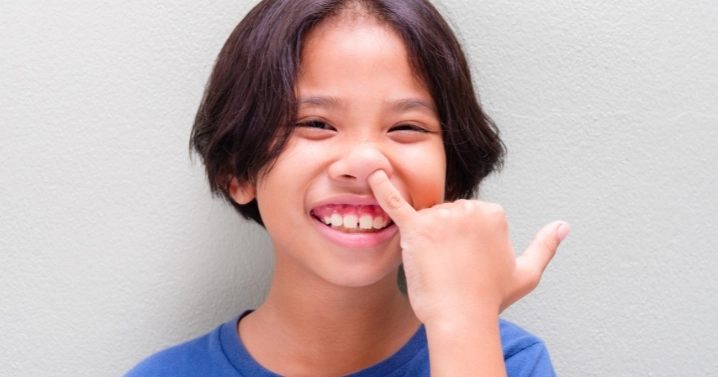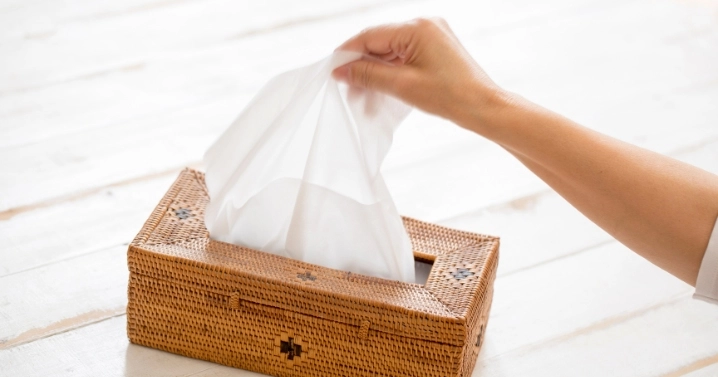Come on, admit you do it.
Whether in the company of a spouse or on the sly when we think no one is watching, we all poke ourselves in the nose. And other primates do too.
The social stigma around nose cleaning is widespread. But do we really have to… and where do we put our boogers?
As scientists who have studied environmental contaminants in our homes, workplaces, and gardens, we have a good idea of what you’re really dealing with when you smugly slide your finger up your nostril.
Here’s what you need to know before you take action.

What’s in a booger?
Children who have not yet learned social conventions tend to naturally pick their noses; they quickly figure out that a finger and a nostril work well together. But there’s a lot more to it than snot.
With around 22,000 respiratory cycles every day, booger-forming mucus acts as a critical biological filter, keeping dust and allergens out of our airways, where they might inflame the lungs and contribute to asthma and other long-term lung disorders.
Goblet cells are cells in your nasal passages that create mucus to capture germs, viruses, and dust that may include harmful compounds such as lead, asbestos, and pollen.
The nasal mucus and its antibodies and enzymes are the body’s first-line immune defense system against infection.
The nasal cavity also has its own microbiome. Sometimes these natural populations can be disturbed, resulting in various conditions, such as rhinitis. But in general, the microbes in our noses help fend off invaders, fighting them off on a battlefield of mucus.
Dust, germs, and allergens captured in your mucus end up being ingested as it drains down your throat.
This is usually not a problem, but it can exacerbate environmental exposure to certain contaminants.
For example, lead – a neurotoxin found in household dust and garden soil – most effectively enters children’s bodies through ingestion and digestion.
Thus, you risk aggravating particular environmental toxic exposures if you sniff or eat boogers instead of expelling them.

What does science say about the risks of booger hunting?
Staphylococcus aureus ( Staphylococcus aureus, sometimes abbreviated as S. aureus) is a germ that can cause a variety of mild to severe infections. Studies show that it is often found in the nose (we speak of nasal carriage).
Here’s what one study found:
Nose cleaning is associated with nasal carriage of S. aureus. Its role in nasal carriage may well be a determining factor in some cases. Overcoming the sticking-in-the-nose habit could facilitate S. aureus decolonization strategies.
Picking your nose is a source of an increased risk of transmitting Staphylococcus aureus to wounds, where it poses a more serious risk.
Antibiotics don’t always work on this bacteria. One article showed that:
Growing antibiotic resistance requires health care providers to assess their patients’ sticking their noses habits and educate them about effective ways to prevent this practice.
Streptococcus pneumoniae, a prominent cause of pneumonia and other diseases, may also be spread by nose-picking.
Up other words, placing your finger in your nose is a terrific method to disseminate germs across your environment or to introduce more germs into your body.
Inside the nostrils, there is also a chance of sores and abrasions, which can let disease-carrying bacteria into your body.
Rhinotillexomania refers to nose-picking that becomes so compulsive that it results in self-harm.
Well, I did. And now?

Some eat them (the technical term is macrophagic, which means “feeding on mucus”). Besides the fact that eating a booger is gross, it comes down to ingesting all those mucus-borne germs, toxic metals, and environmental contaminants we talked about above.
Others wipe them on the nearest object, a small gift that another person will later discover. Disgusting…, and it’s a great way to spread germs.
Some more hygienic and respectable people use a tissue to collect everything, then throw it in a trash can or in the toilet.
If you have to pick your nose at any cost, it is most likely one of the less popular selections. After blowing your nose or prodding your nose, please wash your hands carefully because contagious viruses might persist on them until the mucus has completely dried.
No advice in the world will stop you from continuing your quest
In secret, in the car, or on napkins, we all do it. And to be honest, it’s really satisfying.
But let’s acknowledge the relentless efforts of our magnificent sinus cavities, mucous, and noses, as well as other extraordinary biological adaptations. Not to mention that they are attempting to safeguard us.
Avoid having your dirty fingers trapped in your nose since it already has to work hard to keep you healthy.
Don’t be a jerk about it.
Blow softly, dispose of the tissue carefully, and wash your hands right away.